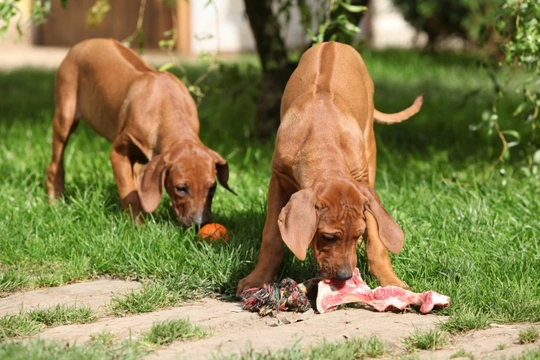
Veterinary arguments against feeding a BARF diet to your dog
The “BARF” diet for dogs, which stands for “bones and raw food” is sometimes referred to by other names including the raw meaty bones diet and natural diet, but all of the various names refer to a very specific way of feeding dogs that involves binning the tinned food and kibble in favour of offering a complete feeding protocol that is designed to mimic the ways that dogs would eat in the wild.
The BARF diet involves feeding your dog organ meat and regular meat on the bone, along with in some cases fish and vegetable matter as well. The principles of the BARF diet are intended to feed dogs in a more natural manner, more similar to the hunter-forager diet that they would eat in the wild, with the intention of keeping them fit, healthy and well.
Whilst the principles of feeding a BARF diet are essentially sound, it is not that easy to just make the switch-being able to fulfil all of your dog’s nutritional requirements takes a lot of research, and can be expensive. It also takes time to prepare and serve the food, and also, room to store a range of pre-prepared meals in the freezer for future use.
Many people that feed their dogs the BARF diet strongly recommend it based on their experiences with their own dogs; however, there are just as many dog owners who are sceptical about the whole concept, particularly when it comes to getting the nutritional balance right and avoiding problems.
You can find out more about the basics of feeding a BARF diet here-but in this article, we will look at some of the most common arguments made by veterinary professionals who are against feeding a raw diet. Read on to learn more.
Nutritional know-how
First of all, in order to be able to reap the potential benefits of feeding your dog a raw diet, you have to get the nutritional content of their meals spot-on, to ensure that they receive all of the essential nutrients and trace elements that they need from their diet.
This takes a reasonable amount of time and knowledge, and while there are plenty of books, websites and forums out there dedicated to helping the newcomer learn how it all works, it is also easy to make mistakes or follow badly thought out advice and inadvertently get things wrong, an issue that does not arise when feeding commercial diets.
Food hygiene integrity
Another important point to consider is the food hygiene considerations of feeding a raw diet to your dog, as you will be working directly with raw meat and bones, from a variety of sources-often including organ meat and commonly, chicken. Uncooked meat can harbour a range of dangerous bacteria such as E coli and Salmonella if not properly stored and prepared, which means that if your prep protocols are not spot-on, you run the risk of passing on such nasties to your dog.
Additionally, you too can potentially be affected by these bacteria too, or carry them on your skin flora and so, pass them on to others. Proper food hygiene and preparation can ensure that this does not happen, but it is important to make sure that your standards don’t slip over time, as you get into a routine.
Bones and danger
Dog owners have long given their dogs raw meaty bones as a treat, and up until around fifty years ago, for many dogs this was the main bulk of their diet. The reason that the BARF diet involves raw meat is not only because of its nutritional value and parallels to a more natural feeding method, but also because cooked, small bones can be dangerous to dogs, who may ingest them whole or be injured by their splintering.
However, smaller bones such as those that you get in chicken can still pose a danger to dogs even when uncooked, and so it is important to pick your meat and bone mix carefully, and not be tempted to make the meat go a little further by including smaller bones.
Misconceptions about feeding raw
Feeding a raw diet when done right can be a good choice for many dogs and their owners, providing that you have the time, know-how and money to commit to it, and do it properly even when the novelty has worn off! The BARF diet helps to keep dogs’ teeth clean and in good condition and also, is potentially better for their urinary tract due to the higher water content than present in kibble, but it is important to critically review fact from opinion when it comes to other aspects of feeding raw.
Everyone has their own views and personal stories about feeding raw, both the pros and the cons-but it is important to do your own research and verify claims made, rather than taking other people’s personal opinions and experiences as fact-whether they are speaking against or in favour of the diet.
Assessment of the results
In order to be able to tell if the BARF diet is right for your dog, you have to have some method of assessing your results, and this can be a challenge when you are feeding a diet of your own design. If you feel strongly about the benefits of the BARF diet, it is natural to be looking for the positive results that you expect, and be overly optimistic about the results.
But it is important to decide how you intend to assess the results of the new diet and have a measurable means of working out your success or failure with it-and be prepared to put it down to experience and move on if it really isn’t working out.



